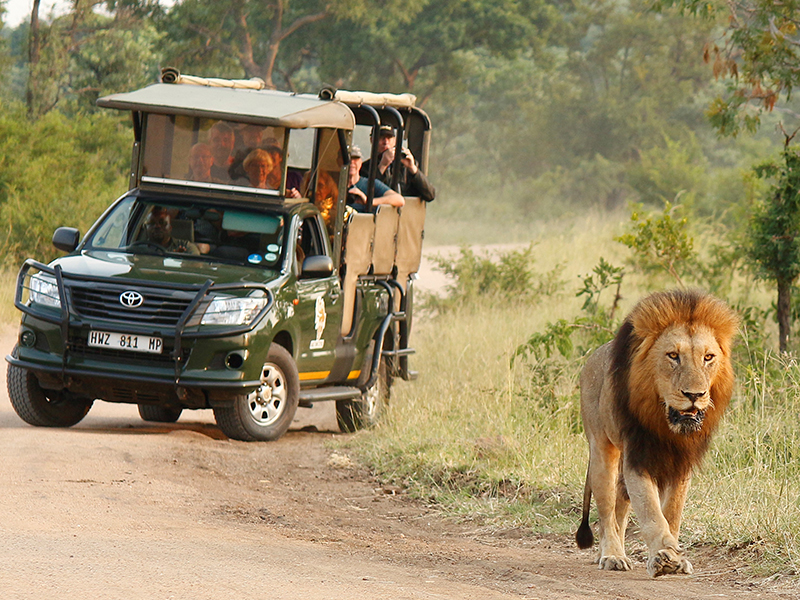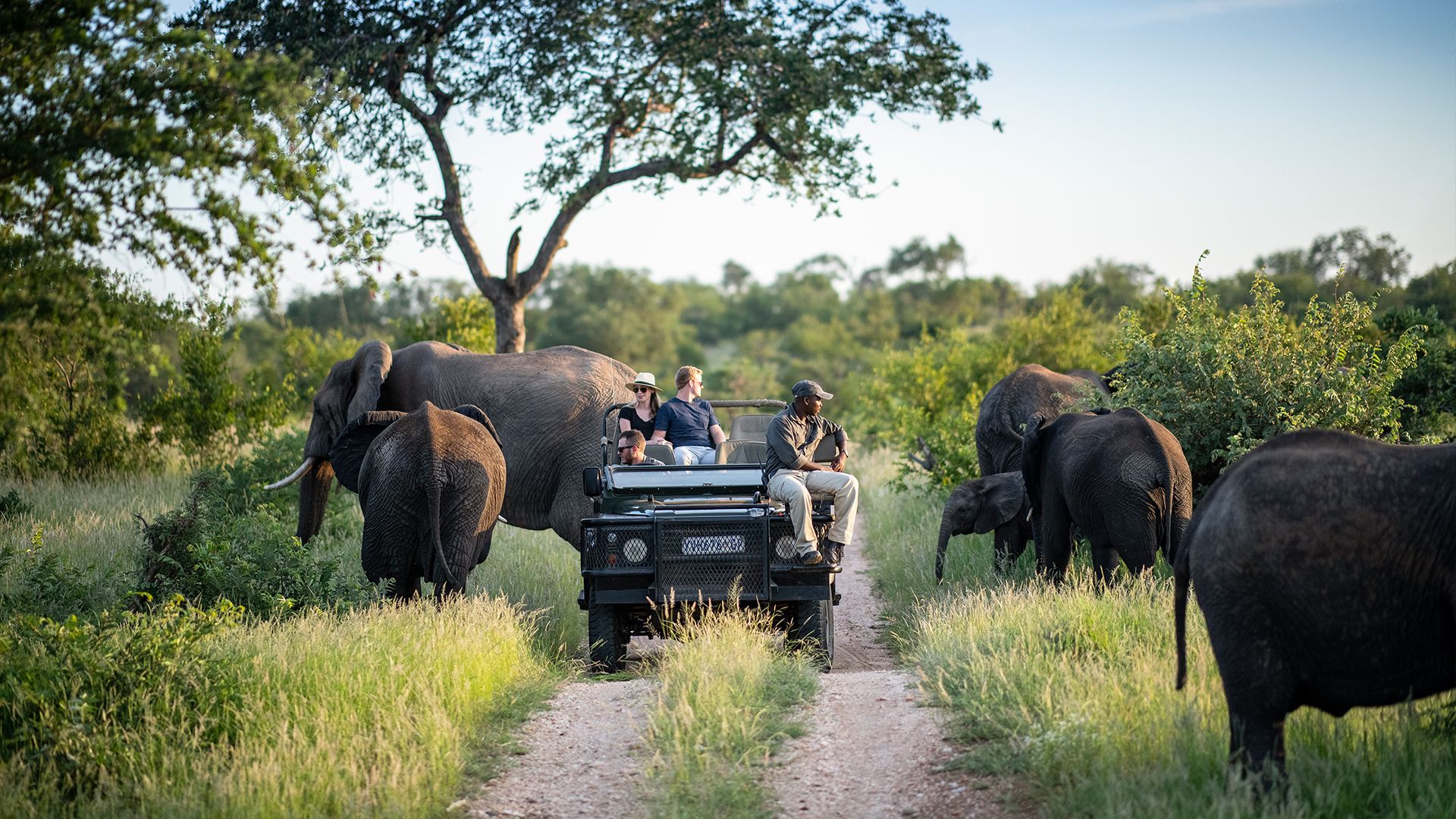Start a Trip of a Life Time with Personalized Kruger Park Safaris
Wiki Article
Discovering the Majestic Wildlife and Scenic Landscapes of Kruger Park Safaris: An Unforgettable Journey Waits For
Kruger Park, a foundation of South Africa's all-natural heritage, provides an intricate tapestry of wild animals and breathtaking landscapes, welcoming exploration and interaction with its varied communities. As site visitors venture into this large sanctuary, they come across not just the renowned Large 5 but likewise a wide range of other types that improve the park's biodiversity.Overview of Kruger Park
One of South Africa's biggest and most renowned game books, Kruger National forest extends roughly 19,485 square kilometers in the northeastern area of the nation. Developed in 1898, it is a cornerstone of conservation initiatives, showcasing varied ecosystems that include savannas, forests, and riverine woodlands. The park is home to an outstanding selection of wild animals, with over 500 bird species and many mammals, reptiles, and plants, making it a biodiversity hotspot.Kruger National forest is separated into various regions, each offering special landscapes and environments, hence enhancing wildlife checking out possibilities. Site visitors can discover the park through self-drive routes or directed safaris, enabling for an immersive experience in nature. The park's facilities consists of well-maintained roads, rest camps, and outing areas, making certain access for all sorts of tourists.
Additionally, Kruger National forest plays a crucial duty in education and research, adding to worldwide preservation initiatives. The park's dedication to lasting tourist promotes liable wild animals viewing, fostering a much deeper recognition for South Africa's natural heritage. With its spectacular surroundings and rich biodiversity, Kruger National forest continues to be a leading destination for adventure candidates and nature fanatics alike.
The Huge Five Experience
Kruger National Park is renowned for supplying site visitors the possibility to experience the iconic Large 5, which consists of the lion, leopard, elephant, buffalo, and rhinoceros. This distinct opportunity to observe these marvelous animals in their all-natural environment attracts wildlife fanatics and experience seekers from around the world.The excitement of spotting the Large Five is not merely concerning the pets themselves but also the context of their setting. Each safari offers a brand-new experience, as guides share insights right into the actions, habitats, and conservation efforts surrounding these species. The elusive leopard, commonly seen relaxing in the trees, showcases the charm of agility and stealth, while the enforcing elephant herd highlights the importance of social structures within wild animals areas.

Moreover, coming across the formidable lion prides uses a peek right into the intricate dynamics of predator-prey connections. The Cape buffalo, recognized for their unpredictable nature, adds an aspect of excitement to any kind of safari. Finally, the critically endangered rhinoceros works as a poignant pointer of continuous preservation efforts. This immersive experience promotes a deeper gratitude for wild animals and underscores the significance of protecting these amazing creatures for future generations.
Picturesque Landscapes and Ecosystems
Frequently commemorated for its awesome charm, the landscapes of Kruger National Park supply a varied tapestry of communities that enhance the safari experience. Extending nearly 2 million hectares, the park is home to a plethora of environments, including savannahs, timberlands, wetlands, and rivers. Each community is uniquely interwoven, developing a dynamic setting that supports a selection of plants and animals.The savannahs, characterized by huge grasslands populated with acacia and site baobab trees, provide suitable grazing grounds for herbivores like wildebeests and zebras. On the other hand, the dense timberlands and thickets provide haven for predators and smaller varieties, fostering an abundant biodiversity. The park's rivers and waterholes are lifelines for wildlife, bring in a myriad of animals, specifically during the completely dry period.
This elaborate interaction of ecosystems not only sustains the park's iconic wild animals but likewise offers visitors with sensational vistas, from rolling plains to significant rocky outcrops. Whether traversing open savannahs or discovering thick bushveld, the beautiful landscapes of Kruger National forest promise to leave an indelible mark on every safari fanatic's heart.
Ideal Times to See
Understanding the very best times to check out Kruger National Park can significantly improve the safari experience. Kruger park safaris. The park experiences 2 primary seasons: the dry cold weather from May to September and the wet summertime months from October to April. Each period provides one-of-a-kind benefits for wildlife viewing and landscape admirationDuring the dry season, animals gather around water resources, making wildlife identifying a lot more predictable. The plant life weakens, giving more clear exposure for discoveries of the Huge Five and other species. This period is particularly preferred amongst vacationers because of the desirable problems for video game drives and assisted walks.
On the other hand, the wet season, identified by lavish landscapes and dynamic vegetation, is ideal for birdwatching fanatics. Kruger park safaris. Migratory birds are plentiful, and the park comes to be a place for numerous avian species. In addition, this period marks the birth of many young pets, providing a chance to witness the remarkable dynamics of wildlife communications
Eventually, the most effective time to visit relies on personal choices, whether one looks for the ease of wild animals discoveries or the charm of a blooming ecological community. No matter of the period, Kruger National Park assures an unforgettable journey for all that venture into why not try this out its wild embrace.
Safari Tips and Standards

When planning your safari,Consider the time of year. The completely dry period, from May to September, usually provides better wild animals watching chances. Wear neutral colors to mix into the environment, and avoid fancy or brilliant attire that may alarm pets.
Load basics such as field glasses, a cam, sun block, and bug spray. Remaining hydrated is crucial-- bring sufficient water for your team. Furthermore, be conscious of the park's wild animals; observe from a distance and never ever attempt to feed or prompt animals, as this can modify their natural actions.
Engage with experienced overviews, who give vital insights and boost your understanding of the community. Ultimately, technique your safari with persistence and an open heart, enabling spontaneous minutes that will produce memorable memories in this stunning landscape.
Final Thought
Finally, Kruger Park uses an exceptional possibility to engage with varied wildlife and impressive landscapes. The park's commitment to preservation and education boosts the safari experience, allowing site visitors to appreciate the complex balance of ecological communities. Experiencing the Large Five and discovering various surfaces fosters a deeper understanding of South Africa's all-natural heritage. With mindful planning and adherence to standards, an adventure in Kruger Park guarantees to be both enhancing and remarkable Click This Link for all who start this trip.Kruger Park, a keystone of South Africa's all-natural heritage, uses a detailed tapestry of wild animals and spectacular landscapes, inviting exploration and involvement with its varied ecological communities.Kruger National Park is split right into different regions, each offering unique landscapes and environments, hence boosting wildlife viewing possibilities. The park's waterholes and rivers are lifelines for wildlife, attracting a plethora of pets, particularly during the dry period.
In addition, be mindful of the park's wild animals; observe from a range and never ever attempt to feed or prompt animals, as this can alter their all-natural habits.

Report this wiki page